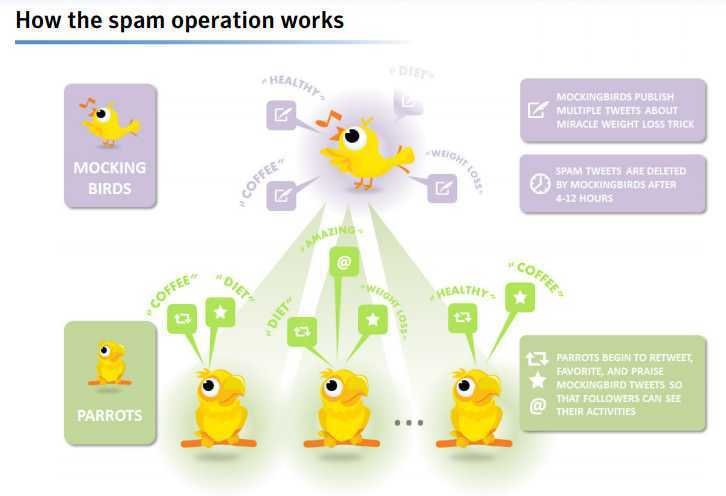Symantec's Satnam Narang has discovered a scammer who managed to create and operate 750.000 Twitter accounts on his own.
X X X X X X X X X X X X X X X X security who discovered the one man show spam was able to earn cash from ads and referrals on other websites.
Narang said he was the only scammer to impersonate news agencies and celebrities over the past year, promoting a fake weight loss product.
“One of the most interesting aspects of it operation spam is the retention techniques and recoveryaccounts, in order to avoid Anti-Spam measures, reports Narang to research of: Uncovering persistent dietary spam operation on ΤWitter (pdf).
"Since the beginning of 2014, an individual has been running a huge spam operation on Twitter for over a year using about 750.000 fake accounts on Twitter. Twitter. "
Narang did not name the scammer, but said he had registered some accounts under his real name and through them, using a well-known Twitter bot, made the retweets.
This scam consists of three types of accounts that mimicked major brands. They used stolen tweets and avatars, and were full of fake fans - or mockingbirds, parrots and eggs according to Symantec terminology.
Big media like TMZ, MTV, Yahoo! and Beeb were some of the Mockingbird accounts, while there were dozens of celebrities and random photos of attractive women on parrot accounts in an attempt to obtain real followers from the fraudster. As Symantec points out, the spam account that uses attractive women's photos is too old but unfortunately still works.





